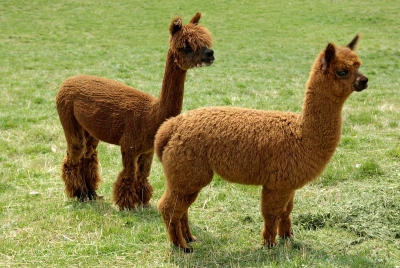
Llamas are hardy, smart animals that are easy to train. Native to Central and South America, they are used as pack animals as they can carry a generous load of weight. However, when they are overloaded, they simply lie down and refuse to move. Did you know llamas spit and kick when provoked or threatened?
Llamas, guanacos, vicuñas (Vicugna vicugna), and alpacas (V. pacos) are known collectively as lamoids. Unlike camels, llamas and other lamoids do not have the characteristic camel humps; they are slender-bodied animals and have long legs and long necks, short tails, small heads, and large pointed ears. Gregarious animals, they graze on grass and other plants. When annoyed, they spit. Lamoids are able to interbreed with one another and produce fertile offspring.
The llama is the largest of the four lamoid species. It averages 120 cm (47 inches) at the shoulder, with most males weighing between 136 and 181.4 kg (300 and 400 pounds) and most females weighing between 104.3 and 158.7 kg (230 and 350 pounds). A 113-kg (250-pound) llama can carry a load of 45–60 kg and average 25 to 30 km (15 to 20 miles) travel a day. The llama’s high thirst tolerance, endurance, and ability to subsist on a wide variety of forage makes it an important transport animal on the bleak Andean plateaus and mountains.
Credit : Britannica
Picture Credit : Google




